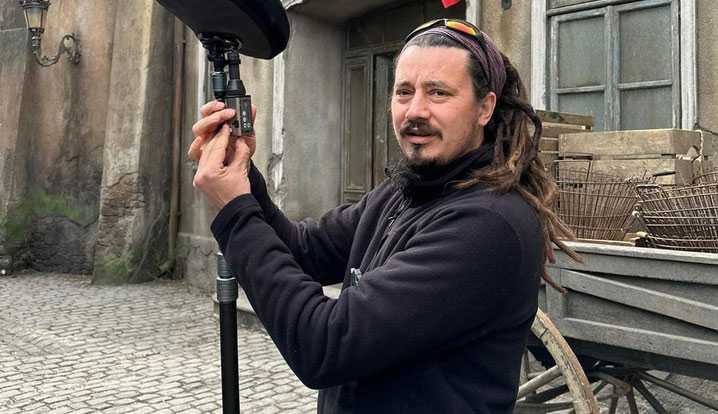Wednesday sound comes to life with Lectrosonics
- Details

Production sound mixer Liviu Lupsa brings the show dialogue in with his vast toolbox of Lectrosonics gear - SRc Series dual-channel receivers; VR Field modular receiver system; SMQV belt-pack transmitters; SMWB and SMDWB miniature wideband transmitters; HM and HMa plug-on transmitters; IFBT4 IFB transmitters; and IFBR1, IFBR1a, IFBR1b, and IFBR1c IFB receivers - for wireless mic and IFB systems.
Buftea, about 20 km outside the capital city Bucharest, is the very definition of an “industry town.” It was a small village some 70 years ago when the communist government of Romania decided to build studios that would produce feature-length movies that were dense with propaganda. This studio complex would become the largest in Eastern Europe and would fuel the growth of a whole town of film production workers and their families.
As in Hollywood or any industry town, generations follow generations in production work here in Buftea. The Iron Curtain fell more than 30 years ago, but Buftea Studios and its skilled workforce live on producing not only Romanian-language film and TV, but also productions in English and other languages. Lupsa was himself born into this Buftea tradition and is now highly sought after for sound work; his credits include The Contractor, starring Chris Pine; The Romanoffs, starring Diane Lane; Flowers in the Attic: The Origin, with Jemima Rooper and Max Irons; and Mirrors, with Kiefer Sutherland.
“I was lucky. Very lucky,” Lupsa says of his entry into production sound. “I had the luck not to be a CPA or something like that.” He didn’t have to go away to school to learn film and TV production; he simply grew up in that world in Buftea. He started out 20 years ago handling audio cables during shoots, then became a boom operator, and worked his way into overseeing mixing and recording production sound.
Lupsa estimates that he’s been using Lectrosonics products for about 12 years. He’d been introduced to the brand in 2007 working with Keith Garcia, a sound mixer from Los Angeles who used only Lectrosonics systems based around UM400 transmitters. “I saw that Lectrosonics was the answer for me. The important thing is that they’re rock solid,” he explained.
Lupsa has enthusiastically adopted Lectrosonics as his go-to equipment, as its reliability and performance have never let him down even in difficult conditions. He cites one scene in The Contractor that was shot in a big, busy intersection in Bucharest. There were about 50 vehicles circling the intersection — cars, trams, motorcycles, etc. — and he was working in the middle of the intersection as Chris Pine’s character spoke on a phone while coming out of a metro station and walking around the intersection himself. It was a long continuous shot, and a mishap in sound pickup would necessitate restarting the whole scene. Despite the many vehicles breaking the line of sight, Lupsa had no problem picking up the signal from the SMQV transmitter worn by the star.
In his first production during the pandemic, the 2021 Netflix film No One Gets Out Alive, Covid protocols kept Lupsa and his sound cart working at some distance from the set and the actors. Still, his trusted Lectrosonics gear made it all work flawlessly. Working on Wednesday, on the other hand, was back to a normal working style. “[Working] next to Tim Burton, we all shine more,” he said, “and when you have great gear and a great crew it is that much easier.”
















